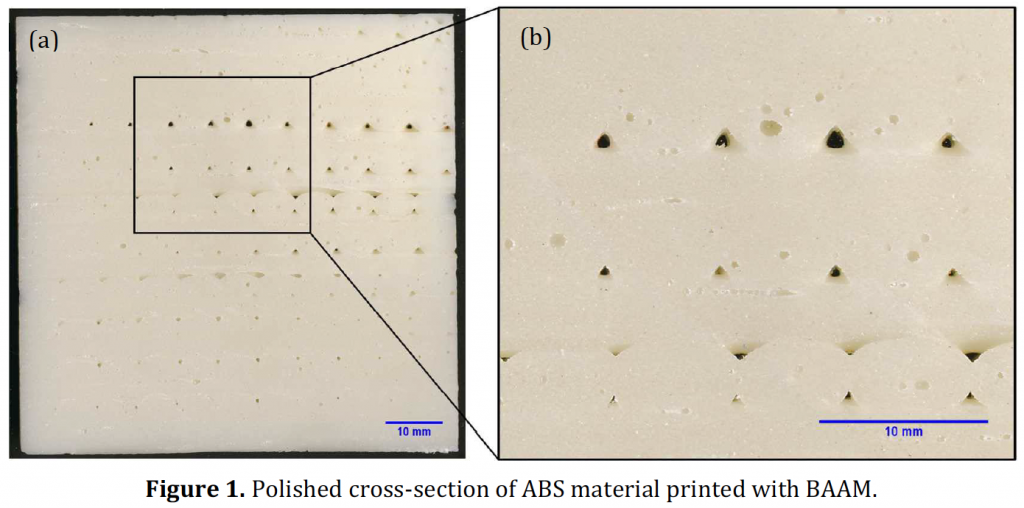A new study investigates large format 3D printing. With collaboration from the University of Tennessee and the University of California, Oak Ridge National Laboratory, Tennessee, have released Structure and mechanical behaviour of Big Area Additive Manufacturing (BAAM) materials.
The study assesses some of the common problems in the deposition of plastic, such as layer delamination, and anisotropic mechanical strength, i.e. the material’s integrity when force is applied in different directions.
Intro to BAAM
Oak Ridge is one of the 17 National Laboratories overseen by the United States Department of Energy, including the Ames Laboratory in Iowa recently spotlighted for the 3D printable metal powders. The lab’s BAAM efforts have previously made it into the Guinness World Book of Records for the biggest 3D printed part in the world.
Oak Ridge’s BAAM machines have been commercialized through the Ohio based Cincinnati Inc. and are capable of building parts up to 6 m long, 2.4 m wide and 1.8 m tall.

How does it work?
Oak Ridge’s BAAM process is similar to typical fused filament fabrication (FFF) methods of 3D printing in that it relies on the layering of plastic, in this case ABS, to create a 3D object. The main difference in BAAM is that it takes a pellet-based feedstock, rather than a traditional ‘wire’ filament.
The pellets in BAAM reduce the material cost used to create plastic objects, and the liquid plastic can be fed via single-screw extruder that, according to the report, is up to 200 times faster than a standard FFF 3D printer.

Single-screw extruders aren’t typically found in FFF, and the method helps to reduce the cost and longevity of BAAM as a production method.
The pellet feedstock is also used as a reliable way to create even distribution of reinforced fibers within the finished object. Fusing ABS with reinforcements such as carbon fiber, gives the technique extra strength when compared to other parts made of unfilled resin. These reinforcement molecules are also the causes of some of the porosity found in a BAAM printed object.
Filling in the gaps
As seen from the figures below, using beads as a feedstock increases the chances of triangular voids within the layers of 3D printed object.

Also seen in the figure above are air bubbles that appear in the surface of the plastic.
To avoid these imperfections, Oak Ridge researchers developed a tamping method to help squash the layers together when still in their liquid state. The “z-tamping” attachment (seen below) encourages better flow of the melted molecules through a 20Hz vibration, and a cooled circular plate.

The mechanical strength of the objects produced using the z-tamping method is tested using 3D printed ABS hexagons. Conclusions of the test leave researchers looking into ways to improve the anisotropic distribution in the material.
Nominations for the first annual 3D Printing Industry Awards are now being accepted.
You can stay updated with the latest additive manufacturing news by following 3D Printing Industry on Twitter, liking us on Facebook, or signing up to our newsletter.
Featured image shows the front of 3D printed Shelby Cobra made using Cincinnati Inc. BAAM machine. Photo via: e-ci.com



